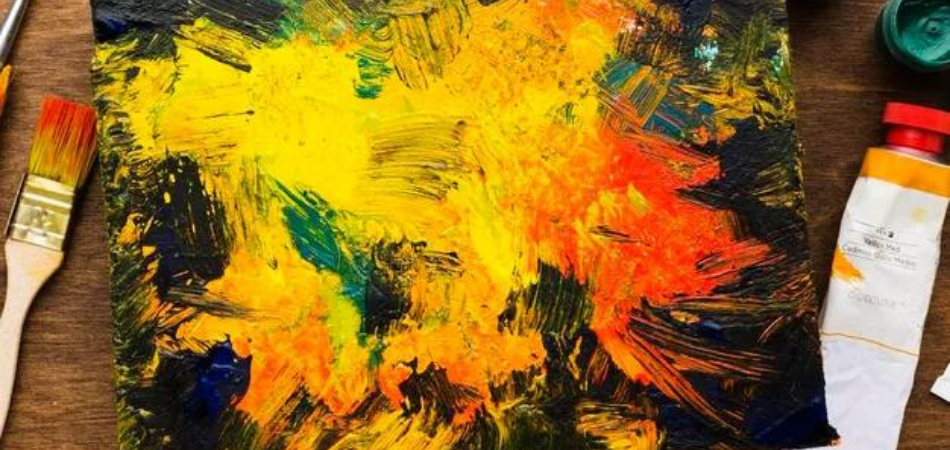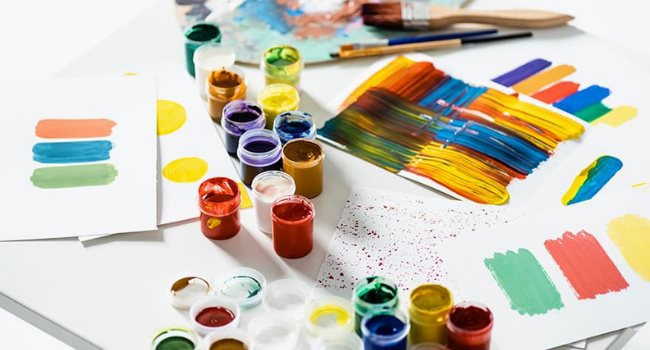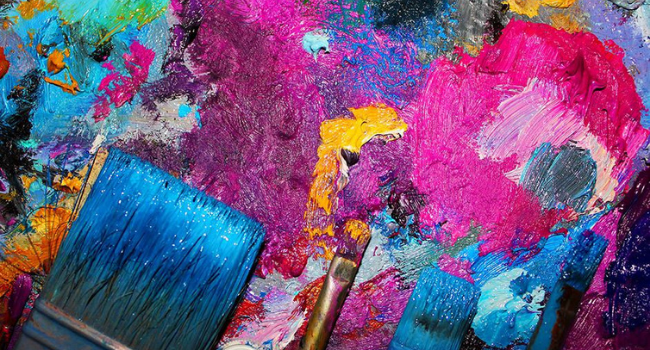Randy Charles is the owner of PaintCentric.com, a website dedicated to providing information, tips, tricks, and news about all things paint. With over 10 years...Read more
To safeguard your acrylic painting, prepping the surface correctly is a must. This includes cleaning it with the right stuff. Additionally, it’s essential to seal the surface to protect it. In this section, we’ll go through the various steps you need to take to make sure your painting is ready and secure:
- Clean the surface with the right stuff.
- Seal the surface.

Remove any dust, dirt, and debris.
Before beginning a paint, coating, or sealant project, starting with a clean surface is crucial. This will ensure better adhesion of the material and a longer-lasting finish.
Clean the surface with detergent, degreaser, or another cleaning solution to remove oils, dust particles, dirt, debris, and other contaminants. Do this before pressure washing, if needed. After applying cleaning solutions, rinse the surface with water.
Scrub stubborn contaminants with a brush or steel wool on surfaces tolerating firmer scouring. Then rinse with warm soapy water. High-pressure washing may be useful in some cases, but use it carefully; it could cause damage if not done right.
Related: Can You Use Acrylic Paint on Guitar?
Let all surfaces dry completely before starting any painting projects. Usually, this takes about 24 hours in moderate temperatures. However, it may take longer depending on the weather and dew points in the area.
Apply a primer or sealer.
Before applying any paint or finishing material, prepare and seal the surface. Clean it with a damp cloth and a mild detergent solution. Let the area dry. Then apply a coat of primer. Select an oil-based or water-based primer, depending on your needs. Let the primer dry completely. Then, start sanding or painting.
Use the Right Brushes and Paints

Are they protecting an acrylic painting? It’s key to use the best brushes and paints. Different brushes have their textures and densities. To make the painting durable, select the right one. Plus, it would be best if you had top-notch paints. Let’s discover what sorts of brushes and paints are available for acrylic art protection!
Choose high-quality acrylic Paint.
When picking Paint for your art project, quality matters. High-quality paints with pure pigments give rich, vibrating colors that will bring your artwork alive. Look for paints with a range of shades from the color spectrum. Some brands make student-grade paints with inexpensive pigments for practice or experimentation. However, they may not have a wide selection of colors.
Many types of acrylic paint brands exist, such as professional, artist, and student-grade paints. Professional-grade acrylics perform better than artist-grade acrylics concerning viscosity (thickness), pigment quality and adhesion. Artist grade is often cheaper than professional products but has restricted choices of colors or tints. Student-grade acrylics are a good option if you’re looking for budget paint that still produces reliable results, like beginner art classes or casual painting projects.
Remember, there is no one-size-fits-all answer—buy what you need for the project you’re working on and select paints based on how you intend to use them. With the right supplies, you can confidently reach new creative heights!

Select the appropriate brush size and shape.
Choose the right brushes and paints for your project. Brushes come in many sizes and shapes. Here’s what to pick for the type of work you do:
- Small-sized Round Brushes: These are 3mm-6mm in width. Perfect for lettering with oil-based paints, acrylics and watercolors.
- Angular Brushes: Tapered edges. Ideal for cleaning lines or filling small spaces. The width is 7mm-13mm. Great with oil-based paints, acrylics and watercolors. Last longer than round brushes.
- Filbert Brushes: Fan-shaped. Long bristles taper off into a rounded edge. 4mm-10mm width. Great for blending colors and smooth transitions. Use with oils, acrylics, watercolors, lacquers, varnishes, etc.
Protect from UV Damage

Acrylic paintings are vulnerable to UV light, so safeguarding them is essential. Limit natural and artificial light exposure. Also, guard against humidity and dust. Here are some quick ways to prevent UV damage to your acrylic painting:
- Limit natural and artificial light exposure.
- Guard against humidity and dust.
Use a UV-resistant varnish.
Is it protecting an acrylic painting? UV-resistant varnish is the way to go! It shields against harsh UV rays and other environmental elements. When buying varnish, read the label and pick one made for acrylic Paint.
There are two kinds of UV-resistant varnish: sprayable and brushable. Spraying is great for full coverage, but it can be pricier. Experts suggest spraying from six inches away in multiple layers. Let each layer adhere and dry properly before adding another.
Ventilation is crucial. Please don’t stay in an area without a respiratory mask; it could harm your painting. Cover any surfaces that don’t need protection from spraying. After a few layers, wait four weeks for the painting to cure. Then it’ll be resistant to sunlight fading and discoloration.
Use a UV-resistant glass or acrylic sheet.
If exposed to direct or reflected sunlight for long periods, UV rays can damage objects like artwork, photos, and home decor. Protecting these objects from UV damage is important to keep them looking good.
One way to protect is with a UV-resistant glass or acrylic sheet. This shields the item from direct sunlight and reflects some damaging rays. Make sure the furniture near the glass matches its direction for best results. Otherwise, light can pass through at an angle. Also, avoid scratch-resistant coatings on glass or acrylic sheets. These will reduce protection over time.
For permanent protection, install solar screens or film on windows or frames. For portable artwork, use mats with Plexiglas cover that have ultraviolet protection. Proper protection can help safeguard pieces from fading and deterioration caused by sun rays.
Storage and Display
Finished with your acrylic painting? Time to store or show it off in an art gallery! It needs to be safeguarded from the elements for proper storage and display. Common choices include:
- Display cases
- Frames
- Glass-fronted cabinets
- Acid-free boxes
To protect your acrylic artwork, use the right type of storage/display option!
Store the painting in a cool, dry place.
Your acrylic painting will last longer if you look after it! To keep it perfect, there are some simple rules.
- Please keep it in a cool, dry place. Humidity can cause the pigments and binder to break down. Avoid extreme temperatures – like near air conditioning or a heater. Keep it at room temperature – between 68 and 75 degrees Fahrenheit (20 to 24 Celsius).
- Choose a spot free from dust and other contaminants. Keep it out of direct sunlight – it can cause fading. For multiple paintings, use frames with UV inhibitors – they help prevent fading from light exposure.
Hang the painting away from direct sunlight.
Choose a location for your painting away from direct light. Sunlight can cause fading and warping.
Hang it several feet away from heat sources. If you can’t avoid the sun, buy museum-grade framing glass to block UV rays. Picture frames with UV-blocking coatings are also available to protect against damage.
Clean and Maintain
Maintaining and cleaning acrylic art is key to protecting it. Frequent cleaning and correct handling will keep them for many years. In this article, we’ll explore how to clean acrylic Paint and protect it from harm. We’ll also explain the ideal storage and handling methods to guarantee your artwork stays in perfect condition.
Clean with a soft, damp cloth
When caring for a painting in acrylic, it’s important to use a soft, clean cloth. Dampen it with water – not chemicals or abrasives, as these may cause Paint to crack and fade. Gently wipe the entire surface to remove dust, grime, and fingerprint smudges. Don’t rub too hard to avoid damage or paint removal. Dry the surface with a clean, dry cloth. Polish the painting with acrylic-safe wax. This will keep it looking good and protect it from moisture while preserving its sheen.
Always protect your painting with a matte finish varnish or wax coating when on display.
Apply a protective coating periodically.
Protective coatings, such as wax or sealant, are important for properly maintaining many materials. They protect the surface from damage caused by water and UV light. These coatings also make the item look polished and resist dirt and dust.
Regularly applying a coating is a must, even if you clean and maintain the item regularly. It creates an invisible shield to defend against dirt and strengthens against wear and tear. Protective coatings can also preserve colors. Some coatings provide additional benefits, like non-slip surfaces or heat protection.
Talk to a professional to select the right coating for your item. Apply the coating according to the manufacturer’s instructions – usually with a soft cloth in circular motions – then let it dry before use or storage.
Frequently Asked Questions
What is the best way to protect an acrylic painting?
The best way to protect an acrylic painting is to varnish it with a water-based varnish such as Golden MSA Varnish. This will help to protect the painting from UV light and dust.
How often should I varnish my acrylic painting?
It would be best to varnish your acrylic painting every two to three years. This will help to keep the painting looking its best and will help to protect it from damage.
Should I use a brush or a spray to varnish my painting?
It is best to use a brush when varnishing an acrylic painting. This will help to ensure an even coat of varnish and will help to protect the painting from any damage the spray could cause.

Randy Charles is the owner of PaintCentric.com, a website dedicated to providing information, tips, tricks, and news about all things paint. With over 10 years of experience in the painting industry, Randy has become an expert in the field and is passionate about helping others learn more about painting. He has written numerous articles on the subject and is committed to providing accurate and up-to-date information to his readers.
- Latest Posts by Randy Charles
-
How Much Do You Tip Painters? The Ultimate Guide
- -
Can You Paint Over Rust Converter?
- -
Can You Paint Inside When It Is Raining?
- All Posts
